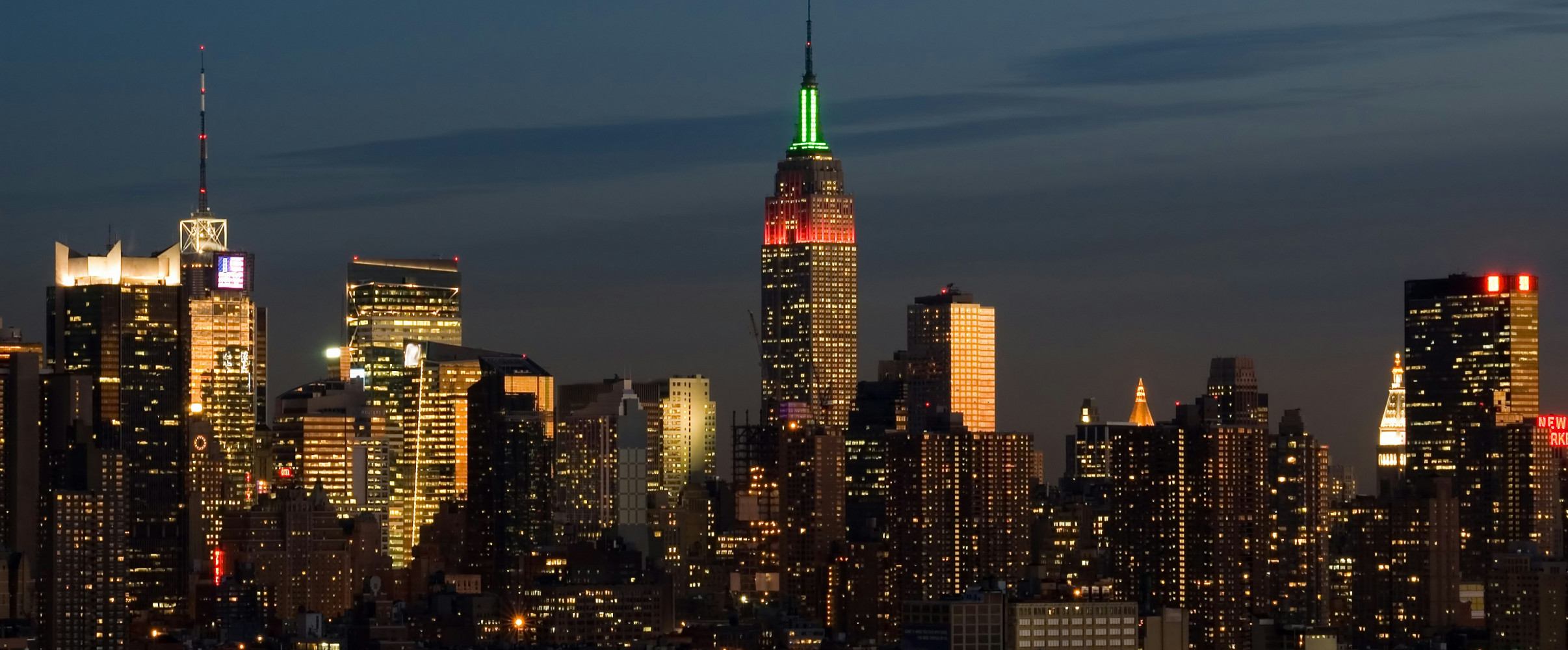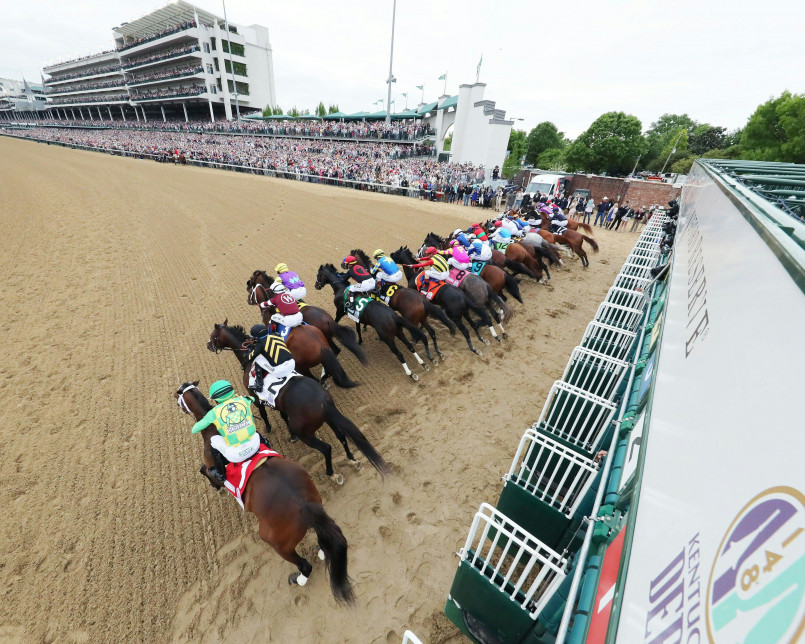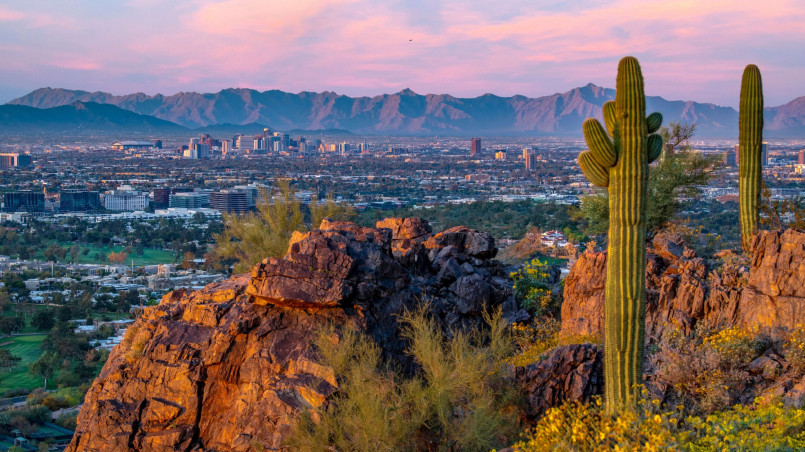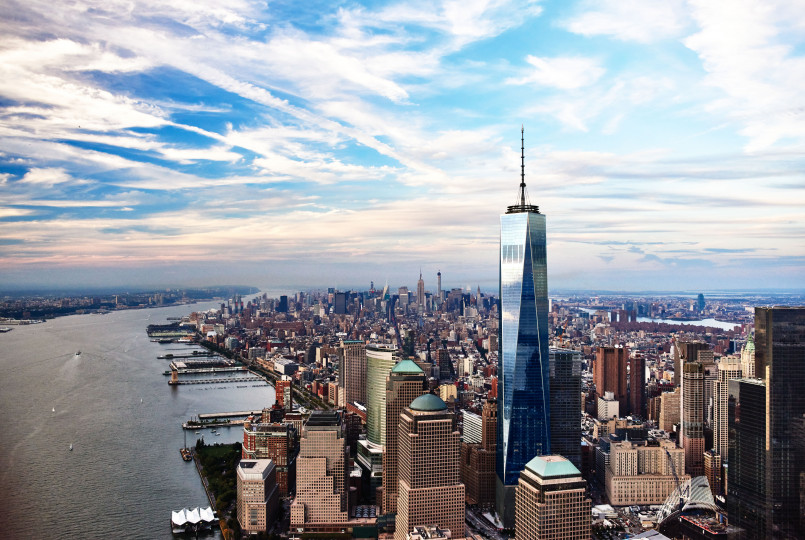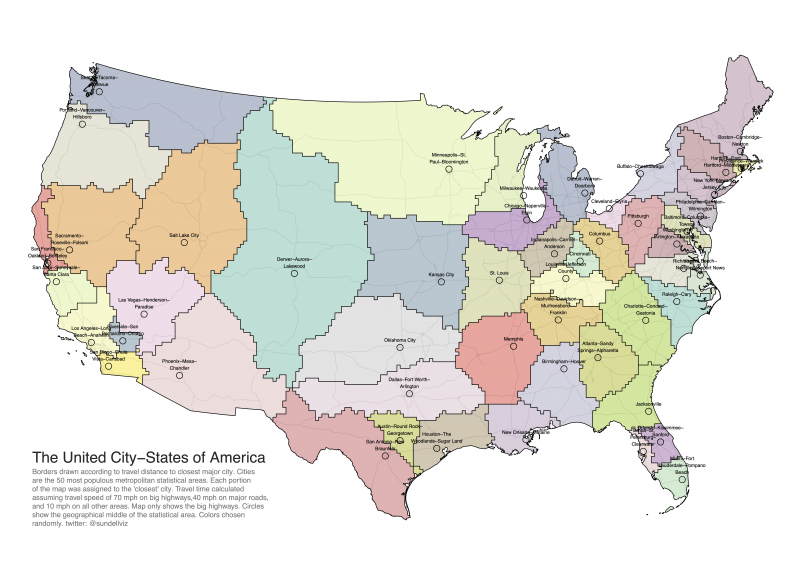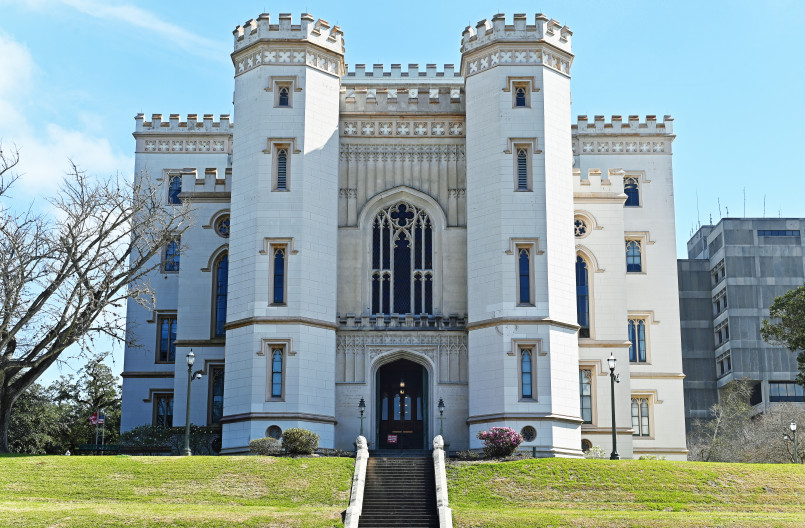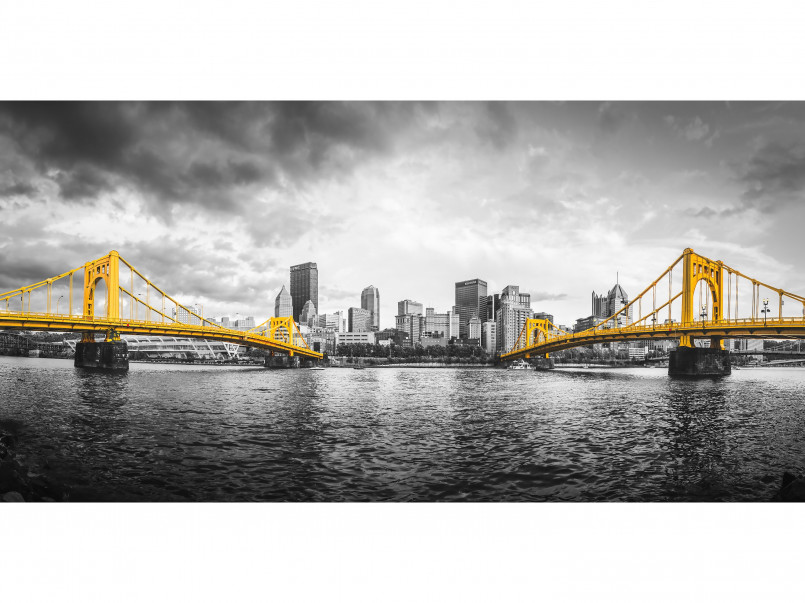American cities are defined by their towering skylines, with iconic skyscrapers that represent the nation's architectural ingenuity, economic power, and cultural identity. From the historic Empire State Building to modern marvels like One World Trade Center, these vertical landmarks tell the story of American innovation and ambition.
The American skyline is a testament to human ambition, engineering prowess, and architectural innovation. Since the late 19th century, the United States has pioneered the development of skyscrapers, forever changing how we build cities and how we experience urban environments. These vertical marvels not only serve practical purposes by maximizing limited urban space but also stand as powerful symbols of American economic might, technological advancement, and cultural identity.
From the elegant Art Deco masterpieces of the early 20th century to the sleek glass towers of the modern era, America's most iconic skyscrapers have become more than just buildings-they're national landmarks that attract millions of visitors each year and define the character of their respective cities. Let's explore the most significant skyscrapers that have shaped America's architectural landscape and continue to inspire awe around the world.
Empire State Building
Standing proudly in Midtown Manhattan, the Empire State Building remains perhaps the most recognizable skyscraper in the world. Completed in 1931 during the Great Depression, this 102-story Art Deco masterpiece stood as the world's tallest building for nearly 40 years. What makes it truly remarkable is not just its height (1,454 feet including the antenna) but the incredible speed of its construction-just 410 days from start to finish.
The Empire State Building has become an enduring symbol of New York City and American resilience. Its observatory decks on the 86th and 102nd floors offer breathtaking 360-degree views of the city, attracting over 4 million visitors annually. The building's famous lighting system regularly changes colors to commemorate holidays, events, and causes, making it a dynamic presence in the city's skyline.

Beyond its architectural significance, the Empire State Building has permeated popular culture, most famously in the 1933 film King Kong, cementing its place in the American imagination. In 1986, it was designated a National Historic Landmark, and in 2007, it was ranked number one on the American Institute of Architects' list of America's Favorite Architecture.
Chrysler Building
The Chrysler Building stands as one of the finest examples of Art Deco architecture in the world. Completed in 1930, this 77-story skyscraper briefly held the title of world's tallest building before being surpassed by the Empire State Building just 11 months later. What distinguishes the Chrysler Building is its unmistakable stainless steel crown, adorned with eagle gargoyles and a spire that creates one of the most distinctive silhouettes in the New York City skyline.
Commissioned by automotive magnate Walter Chrysler, the building incorporates numerous automotive motifs, including gargoyles modeled after Chrysler radiator caps and a brick pattern resembling the Chrysler's wheel hubcaps. The lobby is equally impressive, featuring African marble walls, chrome details, and a ceiling mural titled "Transport and Human Endeavor."
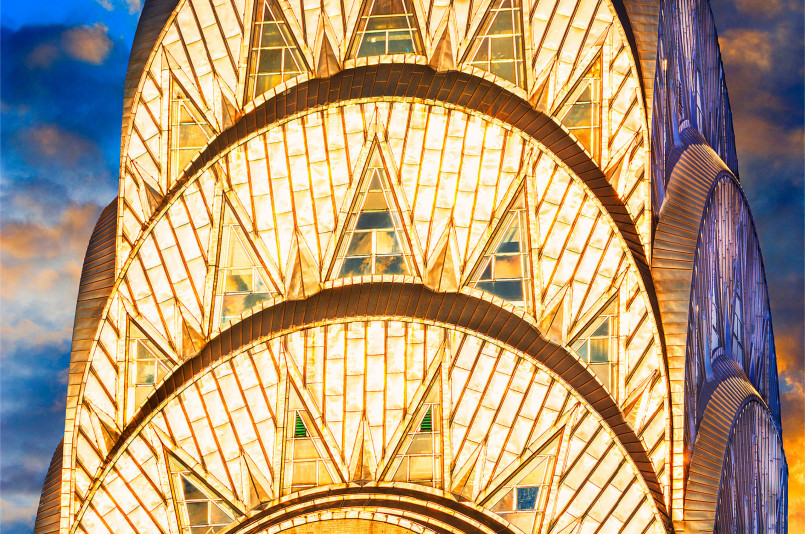
Despite its undeniable beauty and historical significance, the Chrysler Building doesn't have a public observation deck, making its interior a hidden gem that relatively few get to experience. Nevertheless, it remains an architectural icon that captures the optimism and exuberance of pre-Depression America.
One World Trade Center
Rising from the site of the original World Trade Center, One World Trade Center (also known as Freedom Tower) stands as a powerful symbol of America's resilience and renewal. Completed in 2014, this 104-story skyscraper reaches a symbolic height of 1,776 feet-a deliberate reference to the year of American independence-making it the tallest building in the Western Hemisphere.
The building's design, by architect David Childs of Skidmore, Owings & Merrill, features a simple, tapering geometric form consisting of eight isosceles triangles. This creates an octagonal floor plan that transitions from a square base to a smaller square at the top, rotated 45 degrees from the base. The tower's exterior is clad in prismatic glass, giving it a dynamic appearance as it reflects changing light conditions throughout the day.
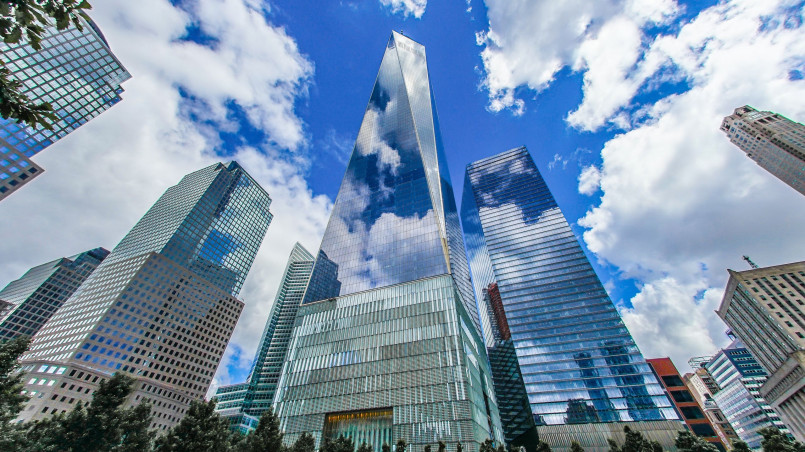
The One World Observatory, located on floors 100-102, offers spectacular views and an educational experience about New York City and the building's construction. Beyond its architectural significance, One World Trade Center serves as the centerpiece of the rebuilt World Trade Center complex and a solemn reminder of the events of September 11, 2001.
Willis Tower (Formerly Sears Tower)
Dominating Chicago's skyline since 1973, the Willis Tower (formerly known as Sears Tower) stood as the world's tallest building for nearly 25 years. Rising to 1,450 feet (1,730 feet including antennas), this 110-story skyscraper revolutionized tall building design with its innovative bundled tube structure-essentially nine square tubes of different heights bound together to act as a single unit.
This engineering breakthrough, developed by structural engineer Fazlur Rahman Khan, allowed the building to reach unprecedented heights while using less steel than conventional designs. The building's distinctive step-back design is a direct result of this structural system, with the tubes terminating at different heights to create the tower's iconic silhouette.
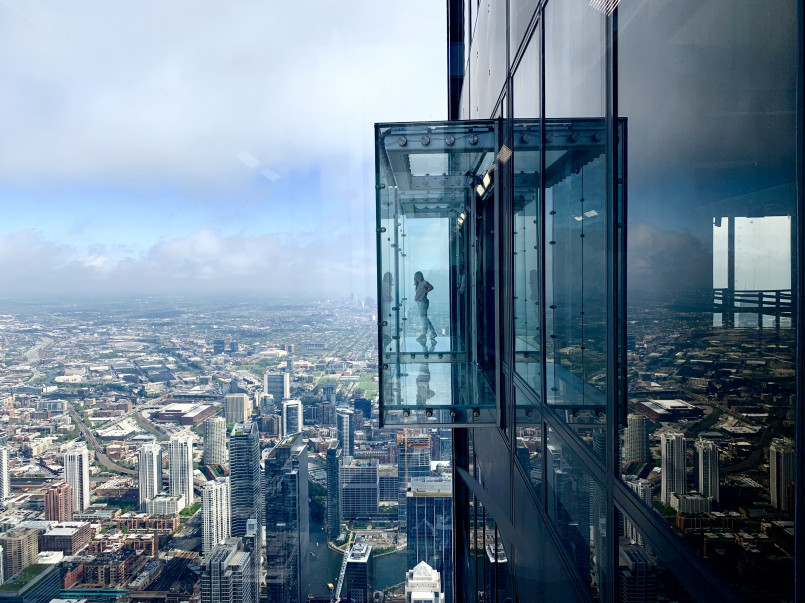
The tower's Skydeck on the 103rd floor includes "The Ledge," a series of glass balconies extending 4.3 feet from the building's facade, giving visitors the thrilling experience of standing suspended in mid-air 1,353 feet above the street. While no longer the tallest building in the world (or even the United States), the Willis Tower remains a testament to American innovation and Chicago's architectural legacy.
John Hancock Center (875 North Michigan Avenue)
Now officially known as 875 North Michigan Avenue (though still commonly called the John Hancock Center), this 100-story skyscraper is another Chicago landmark that helped define modern tall building design. Completed in 1969, the building rises 1,128 feet and features a distinctive tapered form and external X-bracing that has made it instantly recognizable.
Like the Willis Tower, the John Hancock Center was designed with input from engineer Fazlur Rahman Khan, whose revolutionary tubular design and external bracing system eliminated the need for internal columns, maximizing usable floor space. The building's tapered form isn't just aesthetically striking-it's functionally efficient, providing greater stability against wind forces.
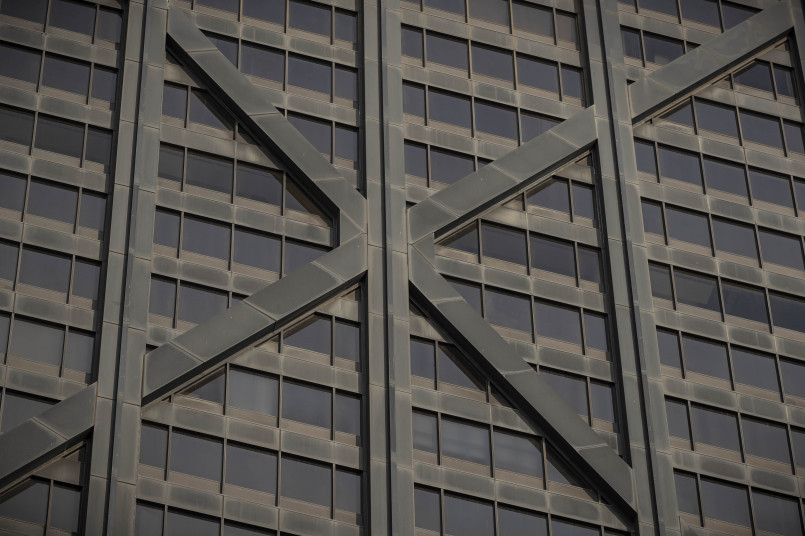
The building's 360 CHICAGO observation deck (formerly John Hancock Observatory) on the 94th floor offers panoramic views of the city and Lake Michigan. Its TILT attraction, a moving platform that tilts visitors outward at a 30-degree angle over Michigan Avenue, provides one of the most thrilling architectural experiences in America.
Transamerica Pyramid
One of the most distinctive landmarks of San Francisco, the Transamerica Pyramid stands out with its unique tapered design that has become synonymous with the city's skyline. Completed in 1972, this 48-story building rises 853 feet and was designed by architect William Pereira.
The pyramid shape wasn't merely an aesthetic choice-it was a practical response to the challenge of building a tall structure on a relatively small lot while allowing maximum light to reach the streets below. The building's unusual form also provides excellent seismic stability, an important consideration in earthquake-prone San Francisco.
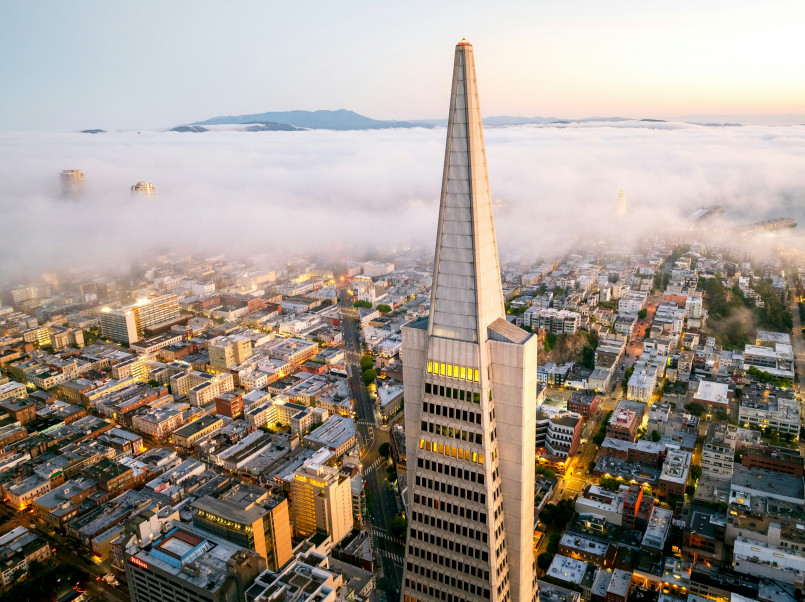
Two wing-like structures on the building's east and west sides house elevator shafts, stairwells, and smoke towers. The top 212 feet of the building is a hollow spire with a glass pyramid known as the "Crown Jewel" that contains aircraft warning lights and a beacon. While no longer the tallest building in San Francisco (surpassed by Salesforce Tower in 2018), the Transamerica Pyramid remains the city's most iconic skyscraper.
432 Park Avenue
Standing as one of the tallest residential buildings in the Western Hemisphere, 432 Park Avenue in New York City has dramatically altered the city's skyline since its completion in 2015. Rising to 1,396 feet with just 85 floors, this ultra-luxury condominium tower is remarkably slender, with a width-to-height ratio of 1:15, making it one of the most prominent examples of the new generation of "pencil towers."
Designed by Rafael Viñoly, the building features a strikingly simple, geometric form-a perfect square in plan with large, regularly spaced 10-foot-by-10-foot windows creating a consistent grid pattern across the facade. This minimalist design was inspired by a 1905 trash can designed by Josef Hoffmann, proving that architectural inspiration can come from unexpected sources.
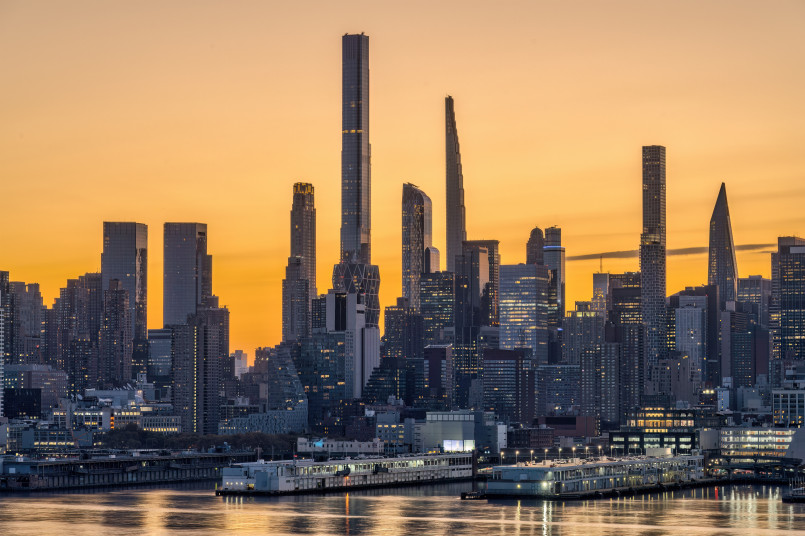
The building's extreme slenderness presented significant engineering challenges related to wind forces. To counteract potential swaying, the tower incorporates five two-story mechanical floors that are left open to allow wind to pass through, along with a 870-ton tuned mass damper at the top.
Bank of America Tower
The Bank of America Tower in Midtown Manhattan stands out not just for its height (1,200 feet) but for being one of the most environmentally responsible skyscrapers in the world. Completed in 2009, this 55-story building was the first commercial skyscraper in the U.S. to achieve LEED Platinum certification.
Designed by Cook+Fox Architects, the tower features a distinctive crystalline form with a sharply angled roof and a clear glass facade that maximizes natural light. The building incorporates numerous sustainable features, including an advanced air filtration system, rainwater harvesting, daylight dimming, and an on-site cogeneration plant that produces electricity while capturing waste heat.
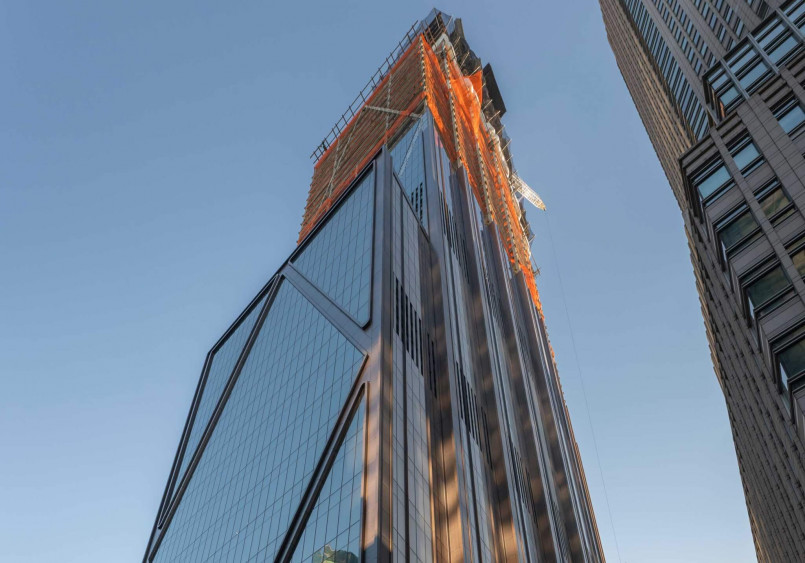
The building's environmental innovations extend to its construction materials, with concrete made using slag (a byproduct of steel production) that reduces carbon emissions by 56% compared to traditional concrete. The tower's sustainable design proves that iconic architecture and environmental responsibility can go hand in hand.
U.S. Bank Tower
The U.S. Bank Tower (formerly Library Tower) has been a defining feature of the Los Angeles skyline since its completion in 1989. Rising 1,018 feet with 73 stories, it stood as the tallest building west of the Mississippi River until 2017, when it was surpassed by the Wilshire Grand Center.
Designed by Henry N. Cobb of Pei Cobb Freed & Partners, the tower features a distinctive crown consisting of a series of illuminated glass cylinders that create a memorable silhouette against the night sky. The building's design incorporates a series of setbacks and a circular footprint that transitions to a square as it rises, giving it a dynamic, sculptural quality.
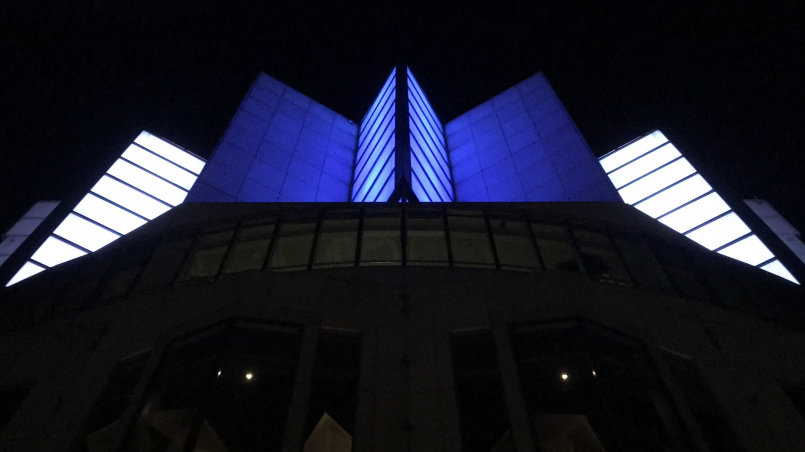
In 2016, the building added the OUE Skyspace observation deck, which included the "Skyslide," a 45-foot glass slide attached to the exterior of the building 1,000 feet above the ground. Though the Skyspace closed in 2020, the U.S. Bank Tower remains one of Los Angeles' most recognizable landmarks and has appeared in numerous films and television shows.
Comcast Technology Center
The Comcast Technology Center in Philadelphia stands as the tallest building in Pennsylvania and the tallest in the United States outside of New York and Chicago. Completed in 2018, this 60-story, 1,121-foot skyscraper was designed by renowned architect Norman Foster and serves as a vertical campus for the telecommunications giant Comcast.
The tower's design embraces the concept of a "vertical city," with a series of three-story sky gardens that create communal spaces throughout the building. These lushly planted atria provide gathering spaces, improve air quality, and connect employees to nature even in the heart of the high-rise.
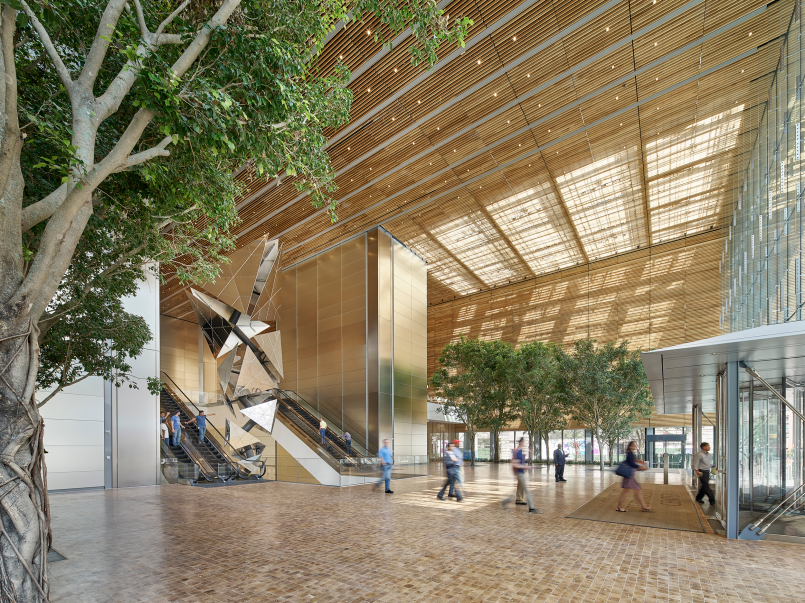
The building's facade features a subtle stepped design on its eastern and western faces, creating a series of terraces as it rises. The tower is topped by a dramatic illuminated lantern housing the Four Seasons Hotel Philadelphia. With its combination of office space, hotel, retail, and public amenities, the Comcast Technology Center represents a new generation of mixed-use skyscrapers designed to enliven urban centers.
30 Hudson Yards
As part of the largest private real estate development in U.S. history, 30 Hudson Yards has transformed the western edge of Manhattan since its completion in 2019. Standing at 1,268 feet with 73 floors, it is the second-tallest office building in New York City and features a strikingly angular design by Kohn Pedersen Fox Associates.
The tower's most distinctive feature is "The Edge," a triangular outdoor observation deck extending 80 feet from the building's facade at the 100th floor. At 1,131 feet above street level, it's the highest outdoor sky deck in the Western Hemisphere and includes a glass floor panel that allows visitors to look straight down at the city below.
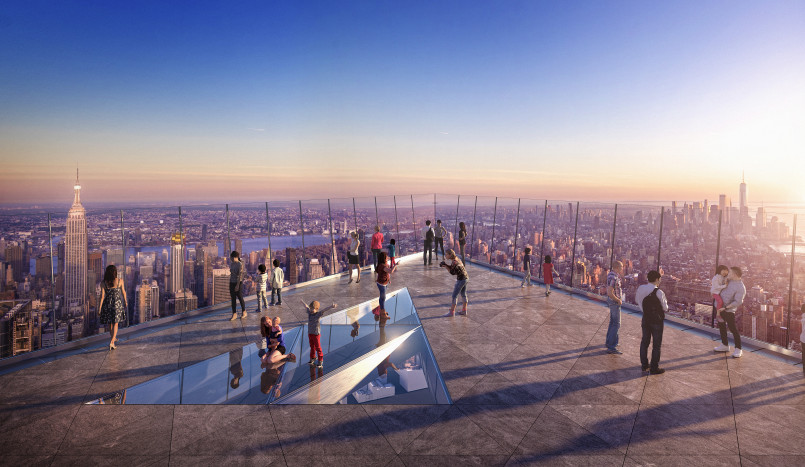
The building's angled facade creates a dynamic presence on the skyline, with its northeast corner appearing to lean toward the Empire State Building. As the centerpiece of the Hudson Yards development, 30 Hudson Yards represents a new chapter in New York City's architectural history and the ongoing evolution of the American skyscraper.
Salesforce Tower
Rising 1,070 feet above San Francisco, Salesforce Tower has reshaped the city's skyline since its completion in 2018. As the tallest building in San Francisco, surpassing the Transamerica Pyramid, this 61-story skyscraper represents a new era for the city's urban landscape.
Designed by Pelli Clarke Pelli Architects, the tower features a sleek, tapering form with a curved glass facade that reflects changing light conditions throughout the day. The building is topped with a crown of LED lights that can display various light shows visible throughout the city. During special occasions, the crown transforms into a 11,000-square-foot public art installation created by artist Jim Campbell.
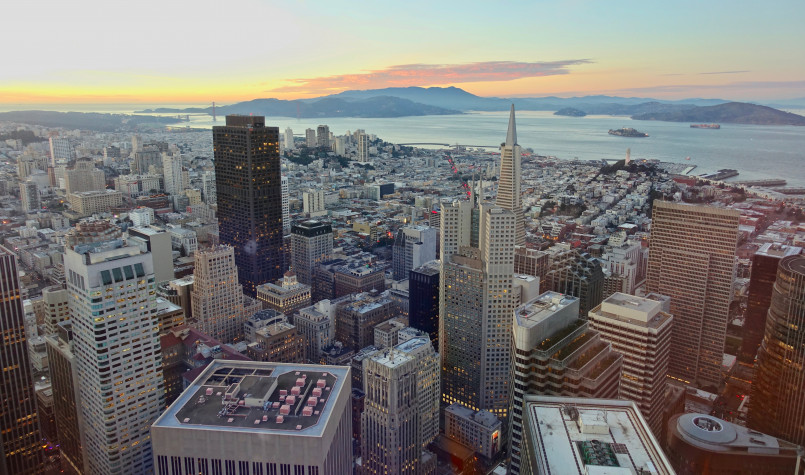
Salesforce Tower incorporates numerous environmental features, including a water recycling system that saves up to 30,000 gallons of water daily and a high-performance glass curtain wall that reduces solar heat gain while maximizing natural light. The building serves as the headquarters for Salesforce, a company that has become synonymous with San Francisco's tech economy.
Columbia Center
The Columbia Center has dominated Seattle's skyline since its completion in 1985. Rising 933 feet with 76 stories, it remains the tallest building in Washington State and the Pacific Northwest. Designed by Chester L. Lindsey Architects, the tower features a distinctive stepped design with three rectangular sections of different sizes stacked upon each other.
The building's black anodized aluminum and reflective glass facade gives it a commanding presence against Seattle's often gray skies. Its triangular footprint creates more corner offices than a traditional square design, while the stepped form provides structural stability and visual interest.
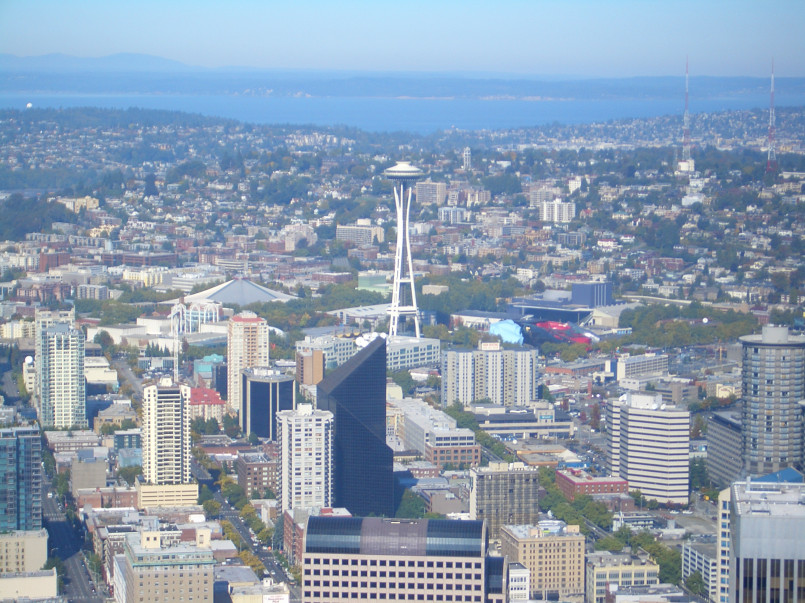
The Sky View Observatory on the 73rd floor offers 360-degree views of Seattle, Puget Sound, and the surrounding mountains, including Mount Rainier on clear days. Despite competition from newer skyscrapers, the Columbia Center remains an iconic element of Seattle's urban identity.
Iconic Skyscrapers Beyond NYC and Chicago
While New York and Chicago claim many of America's most famous skyscrapers, other cities across the nation boast their own vertical icons. In Boston, the 790-foot John Hancock Tower (now 200 Clarendon) stands as a minimalist masterpiece with its parallelogram shape and reflective blue glass exterior that mirrors the historic Copley Square below.
Houston's skyline is defined by the JPMorgan Chase Tower, a 1,002-foot skyscraper with a distinctive five-sided plan and a suspended atrium that creates a dramatic entrance. In Los Angeles, the recently completed Wilshire Grand Center features a unique sail-shaped architectural crown with programmable LED lighting and stands as the tallest building in California at 1,100 feet.
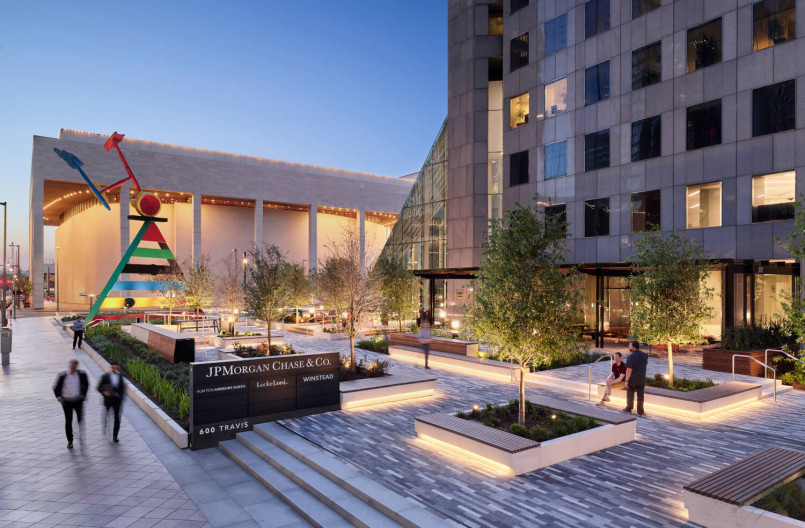
In Minneapolis, the IDS Center has been the city's tallest building since 1972, featuring a distinctive crystal design and a central glass-enclosed atrium called the Crystal Court. Detroit's Renaissance Center, with its central cylindrical tower surrounded by four shorter towers, creates a distinctive presence on the city's riverfront and serves as General Motors' world headquarters.
These regional skyscrapers may not be as internationally famous as their counterparts in New York or Chicago, but they play equally important roles in defining their respective cities' identities and urban experiences.
The Future of American Skyscrapers
The American skyscraper continues to evolve, with several ambitious projects currently in development or proposed. In New York City, 111 West 57th Street (Steinway Tower) has recently been completed, reaching 1,428 feet while measuring just 60 feet wide at its base, making it the world's most slender skyscraper with a width-to-height ratio of 1:24.
The trend toward mixed-use towers is evident in projects like Chicago's One Bennett Park and Philadelphia's Comcast Technology Center, which combine residential, office, hotel, and retail functions within a single structure. These vertical neighborhoods reflect changing attitudes about urban living and the desire for walkable, amenity-rich environments.

Sustainability continues to be a driving force in skyscraper design, with innovations like double-skin facades, advanced energy management systems, and integrated renewable energy generation becoming standard features. The Seattle-based Rainier Square Tower, for example, uses a revolutionary concrete-filled steel tube core that reduced construction time by 40% while maintaining structural integrity.
As American cities continue to grow and densify, skyscrapers will remain central to urban development, though their form and function will continue to adapt to changing economic, social, and environmental priorities. The next generation of American skyscrapers will likely be more sustainable, more technologically integrated, and more responsive to their urban contexts than ever before.
Frequently Asked Questions About 25 Most Iconic Skyscrapers in America: Engineering Marvels That Define Skylines
What is the tallest skyscraper in the United States?
One World Trade Center in New York City is currently the tallest skyscraper in the United States, standing at a symbolic height of 1,776 feet (representing the year of American independence). It was completed in 2014 and stands as the centerpiece of the rebuilt World Trade Center complex in Lower Manhattan.
Why are there so many famous skyscrapers in Chicago?
Chicago is considered the birthplace of the modern skyscraper, following the Great Chicago Fire of 1871 which created an opportunity for innovative rebuilding. The city pioneered crucial technologies like steel-frame construction and the elevator that made tall buildings possible. Chicago has maintained its architectural significance through the work of influential firms and the establishment of the Chicago School of architecture, which emphasized functional design and structural expression.
What makes Art Deco skyscrapers like the Empire State Building and Chrysler Building so special?
Art Deco skyscrapers are beloved for their distinctive ornamentation, setback designs, and lavish materials. Built during the 1920s-1930s, they represent American prosperity and optimism before the Great Depression. These buildings feature decorative elements like geometric patterns, stylized natural forms, and luxurious materials (marble, brass, chrome). Their stepped profiles, created to comply with 1916 zoning laws, produced the iconic wedding cake silhouette that defines the classic New York skyline.
What are the best times to visit skyscraper observation decks?
For the best experience at skyscraper observation decks, visit during weekday mornings (opening time to noon) to avoid crowds, especially at popular destinations like the Empire State Building. For photography, early morning offers clear air quality, while sunset transitions to city lights for dramatic views. Consider weather carefully-clear days offer maximum visibility, though seeing a skyscraper piercing through low clouds can be spectacular. Many observation decks offer special experiences during holidays with themed decorations and lighting.
How do skyscrapers handle extreme weather conditions like hurricanes and earthquakes?
Modern skyscrapers incorporate sophisticated engineering to withstand extreme weather. For hurricanes, buildings use impact-resistant glass, aerodynamic shapes to reduce wind pressure, and damping systems to minimize sway. In earthquake-prone regions like San Francisco, skyscrapers employ base isolation (allowing the foundation to move independently from the structure), tuned mass dampers (giant counterweights that offset building movement), and flexible steel frames that can bend without breaking. The Transamerica Pyramid's distinctive shape provides excellent seismic stability.
Which American skyscraper was the world's tallest for the longest period?
The Empire State Building held the title of world's tallest building for the longest period among American skyscrapers. Completed in 1931, it remained the world's tallest building for 40 years until the completion of the original World Trade Center's North Tower in 1971. Standing at 1,250 feet to its roof (1,454 feet including its antenna), the Empire State Building's long reign as the world's tallest structure solidified its iconic status in architectural history.
What sustainable features are being incorporated into modern American skyscrapers?
Modern American skyscrapers increasingly incorporate sustainability through features like double-skin facades that provide natural ventilation and thermal insulation, high-efficiency HVAC systems, and smart building management systems that optimize energy use. Many include rooftop gardens, rainwater collection systems, and gray water recycling. Buildings like the Bank of America Tower in New York utilize on-site power generation, while Seattle's Bullitt Center generates all its own power through solar panels. These innovations help reduce environmental impact while creating healthier indoor environments.
